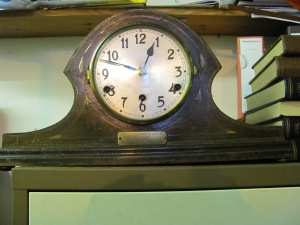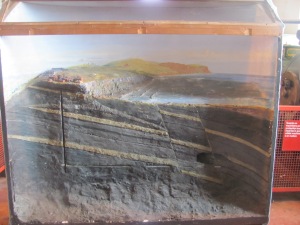Bevin Boys Memorial
A memorial is being officially unveiled today at the National Memorial Arboretum in Alrewas, Staffordshire. It will be dedicated to the men who worked in coal mines in the Second World War.
The memorial is for the 48,000 young men, known as the ‘Bevin Boys’, who joined regular miners down the coal mines in dangerous work to keep coal supplies flowing during the war.
Former miners and the Countess of Wessex will be at official unveiling.
http://www.bbc.co.uk/news/uk-22435449
—————————————————————————————————————-
Owners of pits around Whitehaven area
Lowthers ran pits directly up to 1888
Whitehaven Colliery Company leased pits from Lowthers 1888
Ran William pit (working)
Henry pit (2nd shaft of William, closed 1892)
Duke pit (upcast for Wellington till 1905)
Wellington (working)
James (upcast for William and Henry till 1892)
Saltom (pumping pit till 1868, then standby)
Croft (working)
Kells (upcast for Croft)
Sank Ladysmith 1899-1902 next to Croft, and these were connected underground.
Company wound up operations in 1913.
New company – Whitehaven Colliery Co LTD formed in 1913 with a 50-yearr lease.
Sank Haig 1914-18.
Gave up lease 1932 (closed Ladysmith Dec 1931) and (Wellington July 1932).
Priestman (Whitehaven) Colliery Co LTD Took over 1932.
Re-opened Thwaite pit as upcast 1933.
Commenced winding in No 5 shaft 1933.
Drove new airways to improve ventilation.
Hit by rise in import tax in Irish Free State 1935, as a result, Haig and William closed Oct 1935.
Mar 1937. Coltness Iron Company form a subsidiary, Cumberland Coal Company.
(Whitehaven) LTD. To work Haig and William.
Installed manrider 1942
Booster fan at 4 south
Enlarged Thwaite shaft 1939-41
Introduced (1937) longwall mining
1st Jan 1947 coal industry Nationalised. National Coal Board.
(British coal formed 1988 after Haig closed)
————————————————————————————————————————————–
Oatlands Pit Pica
A recent aquisition to the Haig Colliery Mining Museum was a beautiful quater chiming clock, with an interesting dedication plate on it
“Presented to Mr F Graham
As a mark of esteem and respect
by the officials and workman of
Oatlands Colliery
Aug 23rd 1930”
Oatlands Pit was sunk in 1880 by The Moresby Coal Company who also built the now familiar pit terraces of Pica Village, 70 homes were built at first, with a further 20 added in the early 1900’s.
The pit was sunk approx 500 yrds South East of the village with 2 shafts reportedly through red sandstone. Sunk to a depth of 648ft the pit mined the China Band at 270ft, Main Band at 540ft and The Bannock Band at 330ft.
The pit was served by the Rowrah Branch of the Cleator to Workington railway and regularly carried 500 tonns of coal per day.
Oatlands transfered to The United Steel ownership in 1924 when The Moresby Coal Company was bought out, along with Walkmill Colliery (Moresby Parks).
At its peak Oatlands employed 476 men and boys.
Production at Oatlands was suspended in 1930 due to a marked slump and closure followed in 1932 with final abandonment in 1934.
Mr Frank Graham was the long standing Manager of Oatlands Pit, who following its closure moved on to Risehow in Maryport and later at Harrington Collierys in Lowca.
Oatlands was later in the 1980s part of the extensive Open Cast Coalmining operation working from Keekle Head, and has recently become the subject of discussions as a low level nuclear waste
———————————————————————————————————————————————-
DIORAMA OF HAIG PIT by (Montague Black?)
This model, while displaying some “artistic licence”, is a very good representation of the underground layout in the older part of Haig Pit. It is also representative of the other coastal pits in the county which worked undersea from St Bees Head to Maryport.
The background shows Kells before most of the present day houses were built and in the distance the cliffs of St Bees Head. Haig shafts were sunk, between 1914 & 1918 to provide better access to an area of coal, 2 miles offshore, which was already being worked from Wellington Pit. As there were already three shafts at Wellington the new sinkings became Nos. 4 & 5, the infant mine being known simply as No 5 Pit. Following the tradition of naming pits in the Whitehaven colliery after prominent people or events of the day (Wellington after the Duke, Ladysmith after the Boer War battle etc) the new pit was later named in honour of (Douglas?) Haig, the British Army Commander during the First World War.
The connection to Wellington was made in 1922 and until the closure of the latter in 1932 the two pits worked together. Haig Pit worked until 1986, finally closing as part of the rundown of the industry which followed the 1984 strike (during which Haig continued to work). By then the workings were 4¾ miles from the shore.
The twin shafts, 1200 feet deep, were 18 (No 4) & 21 (No5) feet in diameter. From a depth of 1136 feet drifts were set away (rising at 1 in 120) to meet the Six Quarters seam about 700 yards to the west. This seam was followed down at 1 in 6 to meet the drifts coming through a fault from Wellington’s “Saltom District”, which was in the Main Band seam.
The model illustrates the two methods of working practiced at Haig. The lower workings, nearer the shafts are in the Main Band, a seam of top quality coal up to 14 feet in thickness. It was worked in this area of the pit between 1912 and 1935 by the Bord and Pillar method. As 20 feet wide workings were driven out to the boundary large pillars, 40 yards or so square, were left to support the roof. On reaching the boundary the pillars would be removed as the workings retreated back to the main roadways.
The upper workings were in the Bannock Band, about 8 feet thick and only of slightly lesser quality than the Main Band. Some working was done by Bord and Pillar from 1911 to 1935 but much of the coal was worked around here from 1938 to 1951 by the longwall method. In this system, as the name implies, coal was removed from faces up to 150 yards in length off which a slice 4 feet high, in the upper part of the seam, and up to 6 feet deep was taken. Bringing down stone from above the seam heightened the “gate” roads serving these faces. This was packed into the void from which the coal had been removed as the face advanced, helping to support the roof and protect the “gates”.
Also shown are sections of the strata in which the coal seams lie. It can be seen how they are interrupted by faults, often of considerable vertical displacement. This was the greatest problem in the Cumberland pits, much unproductive time being spent in locating and regaining the coal on the other side of the dislocation. Despite the high quality of the coal, and the skill and efforts of the Cumberland miners, the adverse geological conditions meant that the local pits were almost always less productive than those in other coalfields.
————————————————————————————————————————————————-
Methane Extraction at Haig Colliery
The Whitehaven pits have always had a high rate of gas emission. In 1733 Sir James Lowther presented a paper to the royal society describing the amount of fire damp encountered during the sinking of Saltom pit. The first experiments using the gas were done by Dr William Brownrigg who had a supply piped to his laboratory. Various Schemes were proposed for using the gas but the technology was not available and the decision to examine a gas drainage scheme at Haig was taken in 1948.
To dilute the gas to 1% in the main return it is necessary to circulate 10 tons of air for every ton of coal won. Removal of methane from the airways would make an important contribution to safety and this was the main driver of the project. At its height 730 cubic feet per minute of methane were extracted from the mine most was used onsite to fire the boilers for the steam generation but some was fed into the local gas supply.
Mine-water
Abandoned Mines gradually fill with water and it can be many years before the workings fill and water flows out, polluting neighbouring streams.
The pollution produced by chemical reactions between water and underground rock can cause streams to become lifeless by
(A) Depositing metallic compounds which prevent algal photosynthesis so denying aquatic animals food.
(B) Causing water to become too acidic to allow the passage of fish.
Research is going on to understand
(A) The timescales involved
(B) The reactions which occur
(C) Remedial actions
The Coal Authority and Environment Agency have a rolling programme to treat discharges from abandoned collieries. For example:-
(A) Reed beds offer a controlled environment for reactions to occur rather than in local streams.
(B) Treating acidity with hydrated lime and more rarely bicarbonate.
(C) Arranging for limestone dissolution and/or bacterial action to occur in a ‘reactive barrier’ system.
Ref P. Younger 2002
For further information visit www.minewater.net
Coal Bed Methane
The conversion of plant matter to coal produces gases referred to as coal bed methane (although ethane (C2 H6), carbon dioxide (CO2) nitrogen (N2) helium (He) and hydrogen (H2) are present). These gases are either adsorbed onto the surface of the coal or dispersed into pore spaces around the coal seam.
As the coal seam matures large amounts of water are released causing fractures. This means coal beds are naturally fractured low permeability water saturated gas reservoirs. Because of the large surface area of coal these reservoirs can easily contain 5 times the amount of gas contained in a conventional reservoir at the same temperature and pressure.
The coal bed methane is released during mining throughout the life of the pit and after it has been abandoned.
The gas is a greenhouse gas contributing to global warming. It is also a potentially important energy source
Coal bed gases can be recovered by
(A)Removal prior to entering a mine air stream
(B)Collecting from abandoned mines
(C)Extracting from ‘virgin’ seams where mining has yet to happen.
The UK does recover coal bed methane as the examples show.
| Operator | Site | Electricity output (MW) |
| Alkane Energy | Markham Derbyshire | 6 |
| Alkane Energy | Streetley Nott’s | 3 |
| Octagon | Silverdale Staffs | 9 |
| Octagon | Hickleton South York’s | 5.5 |
| Strata gas | Bentinck Nott’s | 10 |
Locally, the recently formed Workington Gas for Light Limited Company is considering extraction of coal bed methane from the local coalfield.
Types of Coal
|
Name |
% Carbon | % Hydrogen | % Oxygen + Nitrogen |
Use |
| Peat | 60 | 6 | 34 | House fuel |
|
Liquite |
70 |
5.5 |
24.5 |
Incompletely mineralised vegetable matter. Little heating power |
|
Gas Coal |
84 |
6 |
10 |
High hydrogen content Very good for Gas making |
|
Bituminous |
85 |
5 |
10 |
House, Steam raising, Cooking |
| Anthracite | 95 | 2.5 | 2.5 | Heating in closed stoves |




This site is an extremely educational resource,as I have recently become very interested in the mining history of Whitehaven, and I hope to learn much more.Thankyou to all involved in keeping history alive
Fantastic post however , I was wanting to know if you could write a litte more on this subject? I’d be very grateful if you could elaborate a little bit further. Many thanks!|